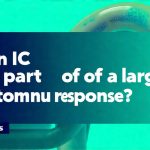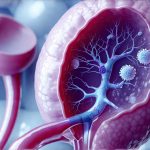Interstitial Cystitis (IC) is a chronic bladder condition characterized by abdominal pain, pressure, and urinary frequency/urgency. For many years, it was considered primarily a urological issue, attributed to things like bladder wall defects or nerve sensitivity. However, as research has progressed, the complexity of IC has become more apparent, leading to growing questions about its underlying causes – and whether those causes extend beyond just localized issues within the urinary tract itself. This shift in understanding has spurred investigation into the potential role of the immune system, specifically examining if IC might be an autoimmune condition or at least have significant autoimmune components.
The persistent and often debilitating symptoms of IC, coupled with the lack of a universally effective treatment, further fuel this line of inquiry. Traditional treatments often focus on managing symptoms – pain relief, frequency control – but rarely address the root cause. If IC is linked to autoimmunity, understanding that connection could unlock more targeted therapies aimed at modulating the immune system and potentially achieving lasting remission. This article will explore the current evidence surrounding the hypothesis that interstitial cystitis might be an autoimmune condition, examining what we know about its potential immunological basis and where future research may lead us.
The Immunological Landscape of Interstitial Cystitis
The conventional view of IC often focused on a defect in the bladder lining’s protective glycosaminoglycan (GAG) layer. This layer normally prevents irritating substances from contacting the bladder wall. A compromised GAG layer was thought to allow urine components to irritate the bladder, causing inflammation and pain. While this theory still holds some weight, it doesn’t fully explain the chronic and often severe nature of IC symptoms in many patients. Increasingly, evidence suggests a significant immune component is at play. Studies have identified elevated levels of various immune cells within the bladders of IC patients, including mast cells, T lymphocytes, and macrophages. These aren’t simply reactive responses to damage; they suggest an ongoing immunological process occurring within the bladder tissue itself.
Furthermore, research indicates alterations in cytokine profiles – signaling molecules used by the immune system – in IC patients. Specifically, increased levels of pro-inflammatory cytokines like IL-6, IL-8, and TNF-alpha have been consistently observed in both urine samples and bladder biopsies. These cytokines are key players in autoimmune diseases, driving inflammation and tissue damage. The presence of these cytokines isn’t necessarily proof of autoimmunity but strongly suggests the immune system is activated and contributing to the disease process. It’s also worth noting that some patients with IC exhibit autoantibodies – antibodies that mistakenly target the body’s own tissues – though their role in the pathogenesis remains debated.
Finally, there’s a growing recognition of the potential link between IC and other autoimmune conditions. Patients diagnosed with IC have higher rates of co-occurring autoimmune diseases like Sjögren’s syndrome, lupus, rheumatoid arthritis, and Hashimoto’s thyroiditis. This comorbidity doesn’t prove causality but raises suspicion that shared immunological mechanisms might be at play in these conditions, including IC. The overlap suggests a predisposition to immune dysregulation may increase the risk of developing multiple autoimmune disorders.
Evidence for Autoimmune Involvement & Challenges in Diagnosis
The presence of autoantibodies is one area receiving substantial scrutiny. While not all IC patients test positive for specific autoantibodies, several have been identified, targeting various bladder components and even systemic markers found in other autoimmune conditions. For instance, some studies have detected anti-urothelial antibodies (antibodies against the cells lining the bladder) in a significant proportion of IC patients. However, it’s important to emphasize that autoantibody presence doesn’t automatically equate to an autoimmune disease; many healthy individuals can test positive for low levels of autoantibodies without experiencing symptoms. The challenge lies in determining whether these autoantibodies are causative or merely a consequence of chronic inflammation and tissue damage.
Another key challenge is the lack of a definitive diagnostic marker for IC itself, let alone for an “autoimmune form” of IC. Diagnosis currently relies heavily on symptom assessment, cystoscopy (visual examination of the bladder), and exclusion of other conditions like urinary tract infections. This can lead to misdiagnosis and delayed treatment. The absence of standardized criteria and biomarkers makes it difficult to identify subgroups of patients with distinct underlying mechanisms – including those with a strong autoimmune component. Developing more precise diagnostic tools is crucial for identifying patients who might benefit from immunomodulatory therapies.
Finally, IC presents as a highly heterogeneous condition. Patients experience varying degrees of severity and different symptom presentations. This variability likely reflects multiple etiologies and disease subtypes. Some individuals may have primarily urological factors driving their symptoms, while others may be predominantly affected by autoimmune processes. Recognizing these distinct subtypes is essential for tailoring treatment strategies and improving patient outcomes. Understanding how to distinguish UTI from IC can also assist in diagnosis.
The Role of Mast Cells
Mast cells are immune cells that play a crucial role in allergic reactions and inflammation. They release histamine and other inflammatory mediators when activated. In IC bladders, mast cell density is often significantly elevated compared to healthy controls. This suggests mast cells are actively involved in the disease process. However, their specific role remains complex. Some theories propose that mast cell activation contributes to bladder pain and urgency by releasing substances that sensitize nerve endings.
- Importantly, mast cell activation can be triggered by various factors, not just autoimmune responses. These include irritants in urine, mechanical stress on the bladder wall, or even psychological stress.
- This makes it difficult to determine whether mast cell activation is a primary driver of IC or simply a secondary response to other triggers.
- Recent research suggests that certain subtypes of mast cells may be more prevalent in IC patients and contribute differently to disease pathogenesis. Further investigation is needed to clarify the precise role of these different mast cell populations.
The Gut-Bladder Axis
Emerging evidence highlights the potential importance of the gut microbiome in IC development and progression, further linking it to autoimmune processes. The gut microbiome – the community of microorganisms living in our digestive tract – plays a critical role in immune system regulation. Disruptions in the gut microbiome (dysbiosis) have been linked to increased intestinal permeability (“leaky gut”), allowing bacterial components and other antigens to enter the bloodstream and trigger an immune response.
- This systemic inflammation can then affect distant organs, including the bladder.
- Studies have shown that IC patients often exhibit altered gut microbial composition compared to healthy individuals.
- Specific bacterial species may be associated with disease severity or symptom presentation. Modulating the gut microbiome through dietary changes, probiotics, or fecal microbiota transplantation is being explored as a potential therapeutic strategy for IC, aiming to reduce inflammation and restore immune balance. This approach recognizes the interconnectedness between gut health, immune function, and bladder health. It’s also important to consider if interstitial cystitis is more common in women as it relates to overall health.
Immunomodulatory Therapies: A Potential Avenue for Treatment?
Given the growing evidence of autoimmune involvement in IC, researchers are investigating immunomodulatory therapies as potential treatment options. These therapies aim to modulate or suppress the immune system, reducing inflammation and alleviating symptoms. Several agents are being explored, including low-dose naltrexone (LDN), which has shown promise in some studies by modulating immune cell function and reducing pain, and pentosan polysulfate sodium (Elmiron), traditionally used for IC symptom management but also possessing some immunomodulatory properties.
- However, it’s crucial to note that the evidence supporting these therapies is still limited, and more robust clinical trials are needed.
- Immunosuppressant drugs typically used in autoimmune diseases like methotrexate or cyclosporine have been tried in some severe cases of IC, but their use is controversial due to potential side effects and limited efficacy.
- Personalized approaches to treatment will likely be necessary, tailoring immunomodulatory strategies based on individual patient characteristics and immunological profiles. Identifying biomarkers that can predict response to specific therapies would also be a significant advancement. Ultimately, further research is essential to determine the optimal role of immunomodulation in the management of interstitial cystitis. Many women wonder is interstitial cystitis mistaken for UTI?
In conclusion, while it’s premature to definitively categorize interstitial cystitis as a purely autoimmune condition, accumulating evidence strongly suggests a significant immunological component underlies many cases. The presence of elevated immune cells, altered cytokine profiles, autoantibodies, and co-occurrence with other autoimmune diseases all point towards a complex interplay between the urinary tract and the immune system. Addressing IC effectively will require a deeper understanding of these immunological mechanisms and the development of more targeted therapies that can modulate the immune response while simultaneously addressing the urological aspects of the disease. Future research focusing on biomarkers, personalized treatment approaches, and gut-bladder axis interactions holds promise for improving outcomes for individuals living with this challenging condition.





















